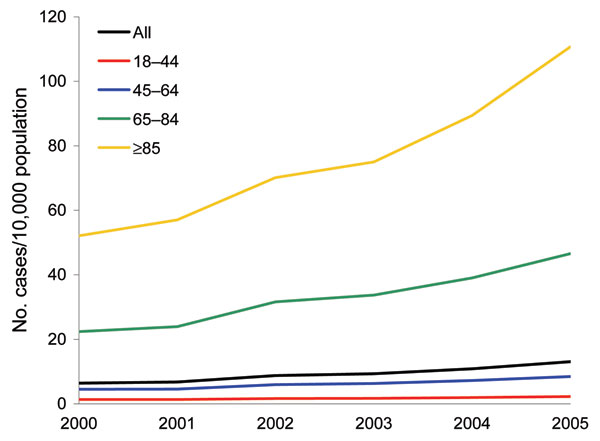Superbug (Clostridium difficile) 4.7X more of a problem if low vitamin D
Low vitamin D level is an independent predictor of poor outcomes in Clostridium difficile-associated diarrhea
Therapeutic Advances in Gastroenterology September 3, 2013
Wallace J. Wang, MD wjw9003@nyp.org
Department of Gastroenterology, New York Hospital Queens/Weill Cornell Medical College, Flushing, NY, USA; Sondra Gray, MD
Department of Medicine, New York Hospital Queens/Weill Cornell Medical College, Flushing, NY, USA; Cristina Sison, PhD
Feinstein Institute for Medical Research, North Shore-Long Island Jewish Health System, Biostatistics Unit, Manhasset, NY, USA
Sushma Arramraju, MD; Department of Medicine, New York Hospital Queens/Weill Cornell Medical College, Flushing, NY, USA
Bijo K. John, MD; Department of Medicine, New York Hospital Queens/Weill Cornell Medical College, Flushing, NY, USA
Syed A. Hussain, MD; Department of Gastroenterology, New York Hospital Queens/Weill Cornell Medical College, Flushing, NY, USA
Sang H. Kim, MD; Department of Gastroenterology, New York Hospital Queens/Weill Cornell Medical College, Flushing, NY, USA
Preeti Mehta, MD; Department of Gastroenterology, New York Hospital Queens/Weill Cornell Medical College, Flushing, NY, USA
Moshe Rubin, MD; Department of Gastroenterology, New York Hospital Queens/Weill Cornell Medical College, Flushing, NY, USA
Background: The incidence, recurrence, and all-cause mortality rate for Clostridium difficile-associated diarrhea (CDAD) has increased markedly over the past 10 years despite treatment. Low vitamin D levels are known to impair immune responses to infection and are associated with increased mortality. We compared the role of patient comorbidity measured by the Charlson Comorbidity Index (CCI) with vitamin D levels to ascertain whether vitamin D levels were an independent variable affecting the outcome of CDAD or a marker of overall comorbidity.
Methods: A prospective cohort study studied 62 patients hospitalized between 2008 and 2009 with manifestations of CDAD and a positive C. difficile toxin assay. All patients received standard antibiotics (metronidazole and/or vancomycin). Their status at 30-day follow up was classified as resolved or recurred/expired. Patients’ CCI was calculated using their medical history. Logistic regression analysis of variables including 25-hydroxyvitamin D, CCI, age, gender, white blood cell count (WBC), albumin and residence type were performed.
Results: There were 62 patients (43.6% men, 56.4% women) with CDAD; mean age was 75 ± 17 years. At 30-day follow up, 28 (45.2%) expired, 10 (16.1%) had persistent or recurrent diarrhea and 24 (38.7%) resolved. Nonresolution was seen in 38 (61.3%). There was no significant association between 30-day resolution status and CCI, gender, WBC, albumin level or residence type. Two variables were found to be independent predictors of resolution of CDAD: normal vitamin D levels (p = 0.028) and age <70 years (p = 0.024). Subjects with low vitamin D were 4.75 times more likely to fail to resolve CDAD than subjects with normal Vitamin D.
Conclusion: In this study, vitamin D level and age are independent predictors of CDAD resolution in hospitalized patients. Low vitamin D levels and age >70 years old are associated with increased likelihood of recurrence. Low vitamin D levels are not a marker of comorbidity or advanced age.
See also VitaminDWiki
2X more likely to kill superbug in 1 month with adequate level of vitamin D 2010
Hypothesis: antibiotic resistant bacteria can be controlled with vitamin D
Antibiotics and Vitamin D are associated with many of the same diseases
Superbug (Clostridium difficile) Infections strongly associated with low vitamin D - many studies
Hypothesis: A hospital diarrhea epidemic caused vitamin D deficiency – Oct 2012 which has a chart showing a 3X recent increase

See also web 1
It appears that some researchers are going the next step - seeing if taking vitamin D decreases the problem
Poster to be presented Oct 2013 at Advancing Science, Improving Care Convention
- Vitamin D: The “feel-better” drug for Clostridium difficile infection?
Session: Poster Abstract Session: Clostridium difficile
Saturday, October 5, 2013
Room: The Moscone Center: Poster Hall C
Ken Koon Wong, MD, Internal Medicine, Akron General Medical Center, Akron, OH,
Rebecca Lee, MD, OB/GYN, Akron General Medical Center, Akron, OH,
Richard Watkins, MD, MS, Division of Infectious Diseases, Akron General Medical Center, Akron, OH watkins3@hotmail.com
See also web 2: very similar conclusion
- Association Between Prehospital Vitamin D Status and Hospital-Acquired Clostridium difficile Infections Feb 2015
- Patients with <10 ng/mL were 5X more likely to have hospital-acquired Clostridium difficile infection than those with ≥30 ng/mL.
- Publisher charges $15 for the PDF
See also web 3
Vitamin D deficiency: A potential risk factor for Clostridium difficile infection 2012 PDF attached at the bottom of this page
See also web 4
Note: this is an age-adjusted chart:

